Epsom salt, also called magnesium sulfate, is often referred to in chemistry as a good amendment for the tomato plant. The objective of this article, however, is to go into scientific details regarding these claims by considering the role played by magnesium and sulfur in plant growth and development, what they lack when these nutrients are unavailable in plants, and how Epsom salt performs as an intervention measure. This means that whether adding it to the tomato care routine for the best results can be described either as beneficial or unfounded will be comprehended from an examination of anecdotal evidence and empirical research. To maximize plant health, new and old gardeners need a direction to help them make informed decisions about what to do with their gardens.
Benefits of Epsom Salt for Tomato Plants
The primary advantage of using Epsom salt on tomatoes plants is its high magnesium content. Magnesium forms the central atom in chlorophyll molecules and is therefore a vital element for photosynthesis. It promotes growth and improves nutrient absorption and fruit quality. Moreover, sulfur another constituent of Epsom salt has an important role to play in various plant processes such as protein synthesis and enzyme function. Magnesium sulfate can alleviate symptoms including yellowing leaves and poor fruit set caused by deficiencies according to empirical studies. However, it is worth noting that the effectiveness of Epsom salt depends mainly on existing soil conditions and a plant’s peculiarities. Regular soil testing will help to determine whether supplementary magnesium is required or not.
How Epsom Salt Enhances Nutrient Absorption
Epsom salt also called magnesium sulfate improves nutrient uptake in tomato plants through several mechanisms. For example, magnesium plays a key role in activating vital enzymes that are part of photosynthesis, carbohydrate metabolism, and DNA synthesis. Magnesium has also been found useful in facilitating the absorption of three major macronutrients for plants which include nitrogen phosphorus and potassium from empirical data sources.The studies show correcting magnesium deficiency may increase chlorophyll concentration, thus improving photosynthetic efficiency, thereby leading to higher energy yield for assimilation into nutrients.
Secondly sulfur being another component of Epsom salt takes part in making amino acids and proteins.Sulfur helps produce chloroplasts as well as affect the activity if enzymes hence influence on nutrient uptake.To mention a case,Sulfur one among those elements needed by cells to make glutathione.This molecule aids detoxification inside cells.From this perspective,this can be seen how it affects ion channels controlling influxes of nutrients.
Boosting Magnesium Levels in Tomato Plants with Epsom Salt
To enhance magnesium levels within tomato plants using Epsom salts, they are recommended to be applied both within the soil and as foliar spray. The right way of applying it into the soil should start with mixing one tablespoon of Epsom salt in every gallon of water. This solution should be poured around the roots of tomato plants every two weeks. This will guarantee continuous supply of magnesium needed by the plant at different stages.
For foliar application, dissolve 1 tablespoonful of Epsom salt in a gallon of water and directly sprinkle it on the leaves. The plant can absorb Mg very fast through its stomata, particularly when it undergoes rapid growth or is deficient.
Certain aspects such as pH, texture or type of soil may determine how effective applications of Epsom Salts are. The pH level for an optimum nutrient availability should range from 6.0 to 6.8 while sandy soils with low organic matter content may require more frequent applications due to higher leaching potentiality.In conclusion regular soil and leaf tissue analysis verified by laboratory testing can provide empirical data for adjusting rates and methods.
Based on empirical results, appropriate use of Epsom salts could raise chlorophyll concentration by between 10% and 25%, thus improving photosynthetic efficiency as well as overall plant health. Used alongside comprehensive nutrient management approaches, it is a worth addition to improving tomato plant’s health and productivity level respectively.
How Epsom Salt Can Help Improve Plants’ Overall Health
The use of Epsom salt can help improve plants’ overall health by dealing with the lack of magnesium and sulfur – vital minerals for the synthesis of chlorophyll and nutrient uptake. The key recommendation in general garden use is to dissolve 1 tablespoonful of Epsom salts in a gallon of water and apply this mixture after every 4-6 weeks. This ensures that adequate amounts of magnesium reach the plants throughout their life cycles. For more targeted treatments, such as roses, the recommended quantity would be one tablespoon per foot high for sprinkling at the base then worked into the soil. It can also be used as a foliar spray, providing nutrients when needed most during peak periods of growth. Furthermore, available experimental results indicate that Epsom salt stimulates seed germination, enhances nutrient absorption by plant roots and makes whole plants more resistant to stressful situations so contributing to healthier gardens that are much more productive than before.
How to Apply Epsom Salt to Tomato Plants
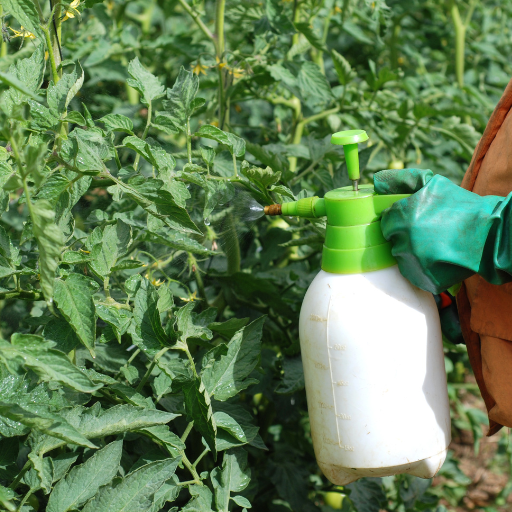
For you to effectively apply Epsom salt on tomato plants, they should be started with during planting. Upon transplanting the seedlings, mix 1 tablespoon of Epsom salt into the bottom of each hole in the soil. This will establish strong roots for the plant. After that, a regular maintenance schedule should be followed. Dissolve 2 tablespoons of Epsom salts in a gallon of water and apply this solution biweekly as a soil drench around the base of each plant. Also, while flowering and fruiting consider applying it as a foliar spray by mixing 1 tablespoon of Epsom salts in a gallon of water and spraying on leaves every two weeks. In this way, tomato plants receive magnesium and sulfur through their foliage, which enhances them, therefore promoting their growth and productivity.
Foliar Spray: Steps and Benefits
Steps for Applying Foliar Spray
- Solution Preparation: Dissolve one tablespoonful of Epsom salt in one gallon (4 liters) of water, ensuring no crystals remain since it can cause clogging sprayers.
- Time of Application: Apply early morning or late evening to avoid evaporation which may limit absorption by leaves.
- Spraying Technique: Use an ultra fine mist nozzle to coat whole surface area including under surfaces where absorption is usually intensive.
- Application Frequency: The best practice is to spray again every fortnight from onset flowers until fruit ripening.
Benefits of Foliar Spray
- Rapid Nutrient Uptake: Magnesium and sulfur are delivered directly through leaf tissues reducing absorption time compared to soil applications.
- Correcting Deficiencies: Yellow leaves characterized by poor fruit development signify magnesium deficiencies, which can be addressed using foliar application.
- Enhanced Photosynthesis: Chlorophyll contains magnesium; hence, foliar sprays increase photosynthetic efficiency as well as overall plant vigor.
- Stress Resistance: Regular use of foliar Epsom salt on tomato plants increases their resilience to various environmental stressors such as dry spells and fluctuating temperatures.
By following these detailed steps and benefits, tomato plants are strong and productive throughout their growth period.
Soil Drench: Proper Techniques
Soil drench is a method in which a solution of water-soluble fertilizer or nutrient mix is blended with water and placed directly onto the soil around the base of the plant. Hence this ensures that essential nutrients reach the root zone where they are optimally absorbed. To perform a soil drench, first, choose an appropriate water-soluble fertilizer or nutrient mix, ensuring compatibility with tomato plants. Then, prepare the solution according to the product instructions, typically diluting concentrate in water at recommended strength. When applying drench ensure that soil is moist but not sitting in water to optimize nutrient uptake and avoid any root damage. Apply equal amounts of the solution to each plant’s base, focusing on reaching the roots without direct contact with leaves so as to prevent the burning effect from happening. Subsequent applications should be made according to specific intervals indicated by the manufacturer, normally between two to four weeks, based on crop growth stages and nutrient requirements.
Direct Application: When and How to Use
At times, especially in emergencies, nutrients, fertilizers, or treatments are directly applied to tomato plants. This means that substances are injected into various parts of the plant, such as leaves and stems or fruits. Direct application should be used when there is an urgent requirement for quick nutrient absorption, like at the onset of nutrient deficiencies or pest infestations.
When to Use
Direct application should be done under different conditions:
- Nutrient Deficiencies: If soil analysis indicates a lack of critical micronutrients such as nitrogen, phosphorus, and potassium, then direct application is recommended in applying appropriate fertilizers.
- Pest and Disease Management: Targeted use of pesticides or fungicides is necessary when pests like aphids appear while diseases such as powdery mildew strike wherever they do.
- Rapid Growth Phases: Extra nutrients during critical growth stages, such as flowering and fruiting, ensure plants meet their increased metabolic demands.
How to Use
- Foliar Feeding: Apply water-soluble fertilizers on top of leaves, making them wet. This method efficiently takes nutrients up by plant leaves within a short time period, for instance, the 1-2-1 NPK ratio acts supplementally. The fertilizers should be sprayed early in the morning or late in the evening so that leaf scorching does not occur.
- Pest Control: Apply insecticidal soap or neem oil directly onto affected areas. Neem oil should first be diluted at 2 tablespoons per gallon of water then sprayed thoroughly on all infested foliage.
- Fungal Treatments: For fungal problems, apply a fungicide such as copper sulfate at the rate recommended by the manufacturer, usually about 1-3 teaspoons per gallon of water, ensuring it covers all infected parts.
- Calcium Deficiency: Blossom end rot, caused by a lack of calcium, can be treated through direct application of calcium chloride or calcium nitrate solutions. For efficient leaf absorption, dilute the calcium chloride to about 4 tablespoons per gallon of water.
Over-application should be avoided because it can harm plants and nearby soil ecosystems; always follow these labeled instructions for all treatments. By regularly monitoring and taking prompt action, the health as well as productivity of tomato crops can be significantly improved.
Recommended Dosages of Epsom Salt
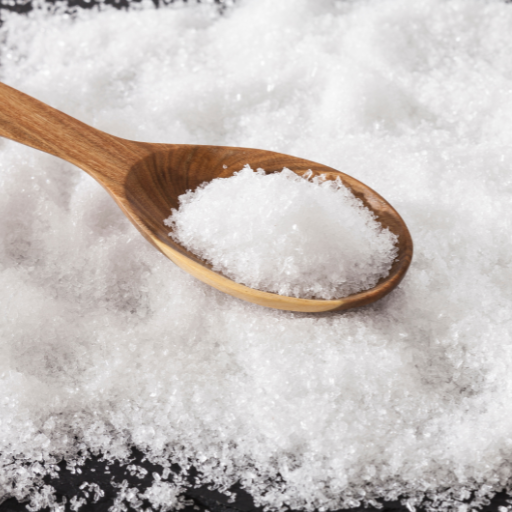
Epsom salt (magnesium sulfate) is a commonly used remedy for soil deficiencies in magnesium or sulfur. The recommended application rate for tomato plants is normally 1 tablespoon of Epsom salts per one gallon of water. This can be sprayed on the leaves or put directly into the ground next to the stalks. It’s best to start at planting time and continue every two to four weeks throughout the season. Apply early morning or late evening for foliar sprays to avoid leaf burn. Keeping up with regular use helps boost plant health, increase chlorophyll production, and improve fruit set. Ensure all applications are consistent with the specific plant needs and environmental conditions.
How Much Epsom Salt per Gallon of Water?
Adding about one tablespoon of Epsom salt in a gallon jar filled with water for tomato plants is usually advised.This amount will help correct magnesium deficiency while improving the overall plant’s well-being.This type of solution is used as a foliar spray and is alternatively put directly into the soil.To maintain such applications at least once in a season through twice therefore beginning from the first month of plantation.When spraying it on leaves you should do it very early morning till late evening so there could be no leaf scorching. Properly selected usage of Epsom salt can increase chlorophyll content in plants, make them more vigorous and also support high yield.
Adjusting Dosage for Plant Size
One must always take into account maturity level and special requirements when determining how much Epsom salt is needed for any given plant size. In smaller newly planted seedlings, which are tomatoes, minified proportions are typically employed.Early growth stages require only 1 teaspoonful/gallon.This way, they will have enough Magnesium, but they won’t get too much fertilizer.
For grown-up full-sized tomatoes though standard rates need readjustments to meet the increase in nutritional requirements.Even so, a tablespoon per gallon is still suitable but sometimes in case of big tomatoes it may be as much as two tablespoons.In any case, all changes must be based on deficiencies detected or soil test outcomes.
Frequency of Application: Weekly, Monthly, or Seasonally?
The frequency of application depends on how the plants are growing and their health status.UC Connecticut recommends that for general maintenance bi-weekly applications ensure that nutrient levels remain constant throughout the growing period.However there are times when Epsom salt should be applied every week if there is an urgent magnesium deficiency.
According to Gardening Know How, established plants would benefit from monthly application best maintaining optimum plant health while not supersaturating with magnesium. This method balances nutrient supply and maintains soil health thus preventing potential detrimental build-up.
Home Guides by SF Gate states that seasonal application at the beginning of the season till flowering can yield good results. This ensures better growth and more fruits through sufficient supply of Magnesium when plants need it most.
Always remember that these guidelines can vary with soil tests and individual plant responses so long as they provide enough nutrients that are exactly meant for particular crop types.
Potential Risks of Using Epsom Salt
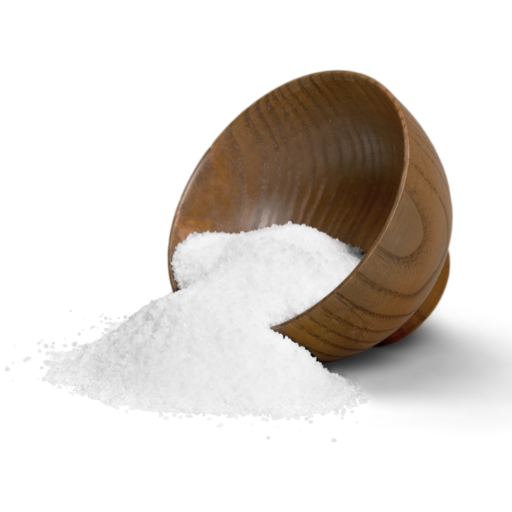
Growing plants with Epsom salt can benefit in several ways, but there are potential risks linked to its use. Overdoing it causes an imbalance of soil nutrients such as potassium and calcium that plants take up magnesium instead of these main elements. This can result into poor plant health and reduced yields as the nutrient balance becomes disordered. Moreover, excessive usage of Epsom salt may result into soil toxicity which can cause problems for soil microorganisms in the long run or affect the entire structure of the earth beneath us. It is important to stick to recommended rates of application and regularly monitor the condition of plants together with soils so as to control such risks.Such insights could be helpful before using Epsom salt on lawns.
Symptoms Tomato Plants Show After Applying Excessive Magnesium Sulphate
Adding extra Epsom salts to tomatoes results in yellow leaves, especially older ones, indicating nitrogen depletion due to magnesium uptake interfering with nitrogen absorption by plants. Leaves may also curl or mottle when too much magnesium interferes with the availability of calcium, leading to weak cell walls and poorly developed leaves.
Tomato plant’s stunted growth might also not bear fruit due to over-application. Stunted growth often happens because there is a disruption in pH levels within soils whereby excessive amounts of magnesium make it more alkaline, reducing other essential minerals, including phosphates and calcium, from getting absorbed, hence causing deficiencies leading to blossom end rot, which characterized by spots on fruits that sink deeply into them.
Soil tests should ideally show no more than 25-50 ppm (parts per million) of magnesium, meaning that it should be held at a moderate level. Therefore, comprehensive soil testing must be undertaken regularly so that these levels can always be checked so that we know how much we have added over time. Thus, we can avoid any unwanted effects on our gardens and ensure a successful cultivation process.
Mixing Epsom Salt with Other Nutrients
Applying Epsom salt to tomatoes must be done diligently to avoid nutritional imbalances that may harm the crops. Therefore, it is important to balance magnesium sulfate with other essential nutrients like nitrogen, potassium, and calcium, which are vital for healthy growth and fruit formation in plants.
Nitrogen: Nitrogen is an element needed by plants for vegetative growth and the production of chlorophyll. To achieve this balance, ensure that the soil contains enough nitrogen, ranging from 50-200 ppm. Frequent sampling of the soils through periodic soil testing is essential to establish if additional nitrogen fertilizers are needed.
Potassium: Potassium is responsible for general plant health, improving disease resistance and water regulation within the plant system. Ideally, a substrate should contain around 150-250 ppm of potassium. Since excess magnesium concentration from the use of Epsom salt can interfere with potassium absorption, it is important to monitor potassium levels accordingly.
Calcium: Calcium aids in cell wall structure, thereby preventing crop disorders such as blossom end rot. The optimal soil calcium content ranges between 1000 and 2000 ppm. Sometimes, overusing Epsom salts could displace calcium, thus limiting its uptake by plants. Balancing Epsom salts with gypsum or calcium nitrate maintains proper nutrient absorption patterns.
Soil Testing: To maintain a balanced nutrient profile, soil must be tested frequently. Tomato cultivation requires comprehensive soil testing, which includes pH levels between 6.2 and 6.8 (Tomato News Magazine). All essential nutrient concentrations should be evaluated for this purpose. Based on these results, adjustments can be made to ensure a balanced nutrient profile.
Maintaining an optimum nutritional balance is critical to the well-being and productivity of tomato plants (Carter, 2015). Judiciously administering Epsom salt with other important minerals and consistently monitoring soil conditions can improve the crop’s overall vigor while avoiding negative consequences.
How to Correct Excess Epsom Salt in Soil
- Leach the Soil: One way of doing this is through leaching which involves applying large quantities of water onto the soil to flush out excess salts. Use clean water that drains well only lest you aggravate the situation further. Depending on the severity of salt accumulation, it may have to be repeated several times before some effect is felt on the plantations.On top, keep an eye on moisture content so that you know when it’s being overdone thereby causing root damage through waterlogging.
- Improve Soil Drainage: Better drainage can stop salt from accumulating in soils. Clayey soils are heavy, so adding organic matter such as compost or well-rotted manure helps increase both porosity and water infiltration. Raised beds or mounded rows would also facilitate better drainage.
- Adjust Irrigation Practices: Deep and infrequent watering methods minimize salt buildup, which could help reduce, if not eliminate, the problem (Olenick et al., 2014). Avoid highly saline water for irrigation purposes; instead, prefer rainwater or purified water whenever possible.
- Apply Gypsum: (Gypsum application information). As a calcium sulfate, gypsum displaces sodium and thus aids salt leaching. Depending on soil texture and test results, the recommended quantity of gypsum to be used is between 1 and 2 tons per acre. This amendment will improve soil structure and enhance the leaching of excess magnesium sulfates.
- Conduct Regular Soil Testing: It is imperative that soil be tested often to monitor salt levels and general nutrient balance. Ideally, salts should be measured by testing soil twice a year, taking into consideration parameters such as Electrical Conductivity (EC). For most crops, EC should read 1-2 dS/m.
Comparing Epsom Salt with Other Fertilizers
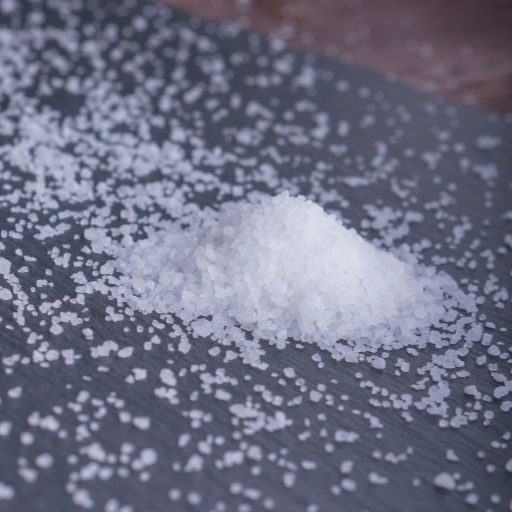
Its primary ingredient is magnesium sulfate, epsom salt specifically treats plants with magnesium and sulfur deficiencies. Traditional fertilizers like NPK (Nitrogen, Phosphorus, Potassium) blends on the other hand provide a wider range of necessary nutrients for plant growth and development. Epsom salt should ideally be used as a supplement rather than an all-inclusive nutritional source. Nonetheless, unlike organic fertilizers that improve soil structure and microbial activity in the soil, they only contribute magnesium and sulfur to the soil’s nutritional quality. It causes less nutrient burn compared to chemical fertilizers; thus being gentle enough for delicate plants while not having their nutrient variety or long-term benefits on soil health.
Epsom Salt vs. Traditional Fertilizers
Traditional fertilizers often have balanced formulations that meet overall nutrition needs of plants through macro- and micro-nutrients. Conversely, magnesium sulfate commonly referred to as Epsom salt targets sulfur and magnesium deficiencies in particular. Chlorophyll production by plants depends on the availability of magnesium, which affects photosynthesis, hence the general well-being of any plant; likewise, sulphur is required for amino acid synthesis, thereby protein maintenance.
Traditional NPK fertilizer was to possess options specific to certain growth stages or crop needs, thus enhancing early root growth, flowering periods, and fruiting phases. The common nutrient ratios seen in NPK, such as 10-10-10 or 20-20-20, signify a balanced nutrient profile where each number represents the percentage weight of Nitrogen (N), phosphorus (P), and Potassium (K). These ratios can be chosen based on results from soil tests so as to meet specific nutrient requirements. Moreover, traditional fertilizers take different forms, including granular form, liquid form, or slow-release ones, hence affecting the application method and rate at which nutrients are released.
For example, when considering technicalities related to the application of Epsom salt, only magnesium and sulfur are the main concerns. Typically, a dilution of 1-2 tablespoons per gallon of water for foliar sprays or 1/4 cup per plant in soil treatments, as guided by deficiency diagnosis, is advised.
To sum up, traditional fertilizers have a more comprehensive range of nutrients that are adjusted to meet the general requirements of plants, while Epsom salt specifically provides additional magnesium and sulfur elements with low chances of nutrient burn and no considerable effect on soil health and other than its specific elements.
Can Epsom Salt Be Combined with Other Nutrients?
This question is well answered as some components can be mixed with Epsom salt to boost their overall efficiency in nutrient delivery systems. However, adding them does not interfere with uptake of essential nutrients when used together with traditional NPK fertilizers. Combining these two can also be helpful, especially if they need sulfur or magnesium supplementation to support better growth and higher yields from such plants. It is important to follow recommended application rates and do soil tests for whole nutriment balances; otherwise excess accumulation may occur where one element becomes harmful to plant’s life cycle
Monitoring and Adjusting Epsom Salt Use
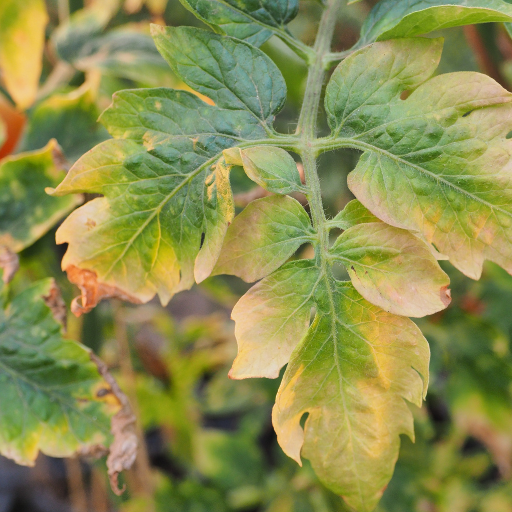
For the best use of Epsom salt, it is necessary to monitor and adjust continuously. Soil tests should be used in the beginning to determine baseline levels of sulfur and magnesium for easy supplementation. In the course of growing season, one should regularly evaluate indicators of plant health such as growth rate, leaf color, and overall vigor. Employing soil moisture meters and PH testers will keep soil chemistry or hydration levels from accidental change due to Epsom salt application (Gilbert 2). Discrepancies in observed plant responses and follow-up soil analyses will inform adjustment on how frequent or richly Epsom salts are administered. For accurate adjustments as well as avoiding overuse, it is important to have a record that contains application rates, observations about the plants’ health and results of soil tests taken.
Signs That Indicate Magnesium Deficiency
Several symptoms indicate magnesium deficiency in plants. The first sign is usually interveinal chlorosis where there is yellowing between veins while veins retain their greenness. Older leaves are commonly affected first since magnesium moves within the plant and thus translocates towards new growths. On top of this, plants may experience retarded growth because magnesium is essential for photosynthesis as well as energy production (Gilbert 3). Leaves can become dry and brittle; they can also show shrinkage, leading to a reduced growth rate of a plant per se. A test showing less than 25ppm Mg would call for supplementation because this level is often seen as being inadequate for optimum plant welfare. Monitoring these parameters regularly and providing prompt sources of magnesium, such as Epsom salt, could minimize deficiency effects and promote healthy plant development.
How Plants Health Dictates Changing Dosages Of Epsom Salts
To adjust the application of Epsom Salt based on plants’ health status, an individual must establish what specific requirements are needed by the species he/she wants to treat. Different plants have different magnesium requirements and over-fertilization may cause toxicity or other nutrient imbalances.
- Evaluation and First Amount: A beginning dose of 1 tablespoon of Epsom salt per gallon of water mixed with a foliar spray or soil drench is often suggested for most vegetables. In more open spaces, putting 1 cup of Epsom salt into 5 gallons of water and distributing it evenly over an area the size of 100 square feet is common practice.
- Monitoring Plant Response: Following initial treatment, check how the plant’s coloration has improved, focusing on new leaves only. When interveinal chlorosis refuses to go away, another feeding should be done every four to six weeks (Gilbert 5). Repeat application only after knowing whether the soil has enough magnesium through testing.
- Adjusting Frequency and Concentration: If two applications have seen no significant improvement, then increase concentration just slightly to about two tablespoons per gallon still making sure the solution is well mixed and uniformly applied to all parts (Gilbert 6). Otherwise, if symptoms such as darkened leaves or reduced calcium absorption appear due to excess Mg add further amounts in lower levels or weaken them.
- Technical Parameters: Use soil pH and electrical conductivity (EC) meters to monitor chemical status alterations induced by Epsom salt within soils (Gilbert 7). The right medium pH should also range between 6.0 –7.5 for any given plant species involved in farming activity while EC levels ought to be analyzed carefully lest salts’ build up could lead to stagnation in root development hence lack of mineral intake into roots themselves.
- Soil Health and Documentation: Keep a detailed record of every Epsom salt application indicating the date, concentration, method of application, and plant responses after that. The best solution to this discrepancy is regular soil tests, which should be carried out at least biannually to enable informed plan adjustment based on accurate soil chemical data.
Observing closely, applying specifically, and documenting extensively is a precise and effective way to optimize the use of Epsom salts in fostering improved plant health.
Seasonal Considerations for Optimal Use
For maximum Epsom salt uses, correct timing for each season is vital in boosting overall plant health and nutrient uptake abilities. By promoting initial growth as well as correcting potential magnesium deficiencies that may cause stunted growth it is advisable to apply Epsom salts during spring when plants are actively growing. The summer months require periodic applications for sustained growth and flowering, especially with high-demand magnesium crops like tomatoes and peppers. Fall seasons are recommended for enhancing dormancy readiness through increased root vigor and hardiness against harsh winter conditions in perennials. However, excess amounts should not be applied towards the start of winter when absorption by plants decreases significantly.
Reference sources
Frequently Asked Questions (FAQs)
Q: Why should you consider using Epsom salt for your tomato plants?
A: Using Epsom salt on your tomato plants can be beneficial because it provides magnesium and sulfur, which are essential nutrients for growing tomatoes. Adding magnesium helps in the formation of strong cell walls, leading to healthier plants and potentially a more bountiful harvest.
Q: How do you know if you need to add Epsom salt to the soil for tomatoes?
A: Conducting a soil test is crucial to determine if your soil is deficient in magnesium. If the test shows low magnesium levels, it may be a good idea to add Epsom salt to the soil to help your tomato plants thrive.
Q: How do you apply Epsom salt directly to tomato plants?
A: You can add Epsom salt directly to the soil by sprinkling it around the base of the plants. Alternatively, you can dissolve the salts in water and use this solution when watering your plants to ensure it is fully absorbed.
Q: Can you add too much Epsom salt to your tomato plants?
A: Yes, adding too much Epsom salt can lead to an imbalance of nutrients in the soil, which might actually do more harm than good. It’s important to stick to recommended doses to avoid over-fertilizing your plants.
Q: What do tomato leaves look like if the plants need more magnesium?
A: If your tomato plants need more magnesium, you might notice the older leaves turning yellow between the veins while the veins themselves remain green. This condition is known as interveinal chlorosis.
Q: How often should you add Epsom salt to your vegetable garden for tomatoes?
A: For successful tomato growth, you should typically add Epsom salt to the soil at least once during the growing season. Some seasoned gardeners may do this at planting and then again as the plants mature, but always tailor the frequency based on your soil’s specific needs.
Q: Are there any other benefits of using Epsom salt in your garden?
A: Beyond helping tomato plants, Epsom salt can be beneficial for other parts of your vegetable garden as it promotes the overall health of plants by improving nutrient absorption. It can also help deter pests and improve seed germination rates for plants like tomato seeds.
Q: What should you do if your soil has too much nitrogen and not enough magnesium?
A: If a soil test shows high levels of nitrogen but insufficient magnesium, you should avoid adding nitrogen-rich fertilizers and instead focus on adding magnesium to the soil using Epsom salt. This balance will support better fruit production and overall plant health.
Q: How does Epsom salt compare to other fertilizers for tomato plants?
A: Epsom salt is not a complete fertilizer but is good for adding specific nutrients like magnesium and sulfur. For a more comprehensive approach, it can be used in conjunction with other balanced fertilizers to meet all the tomatoes’ needs.






